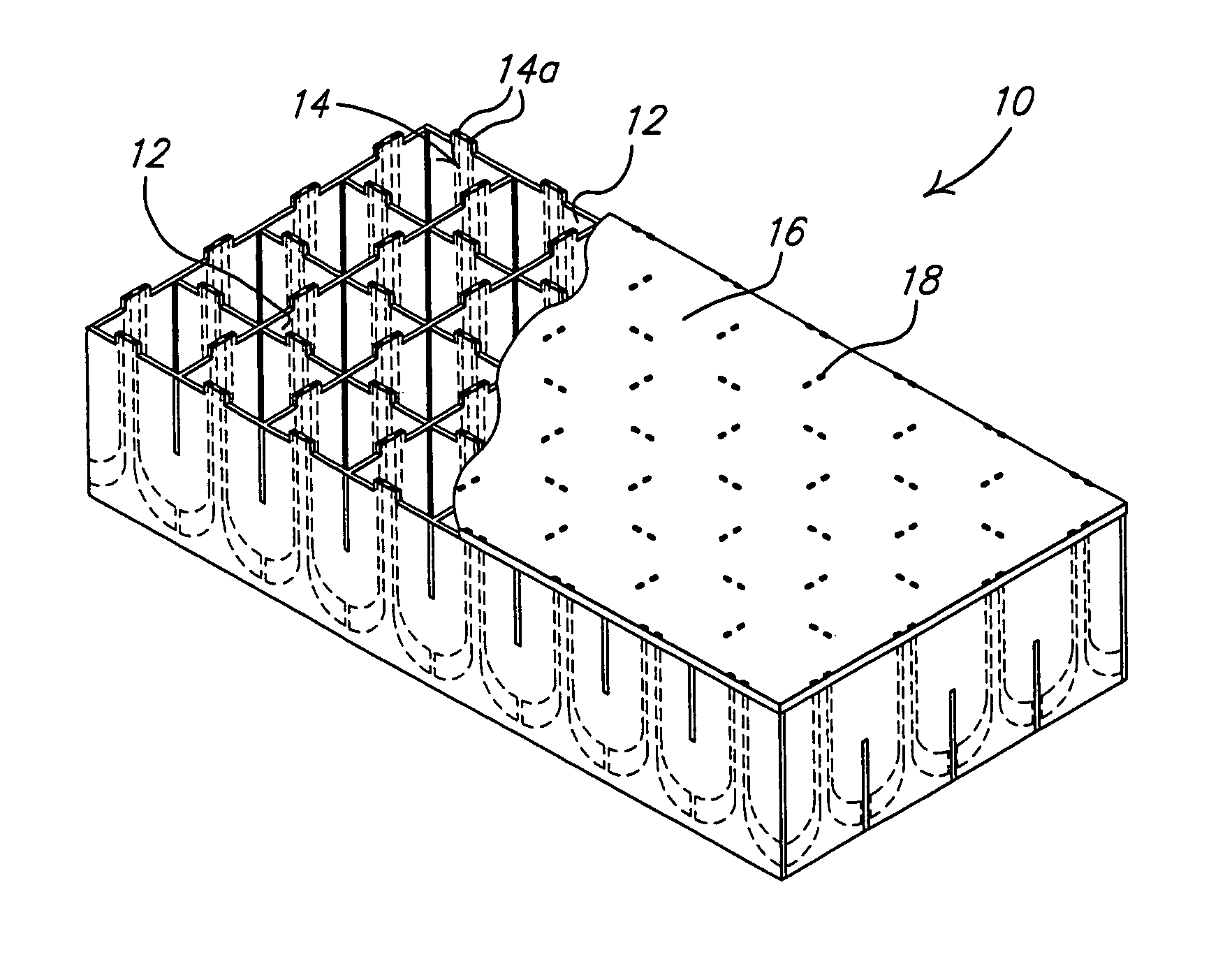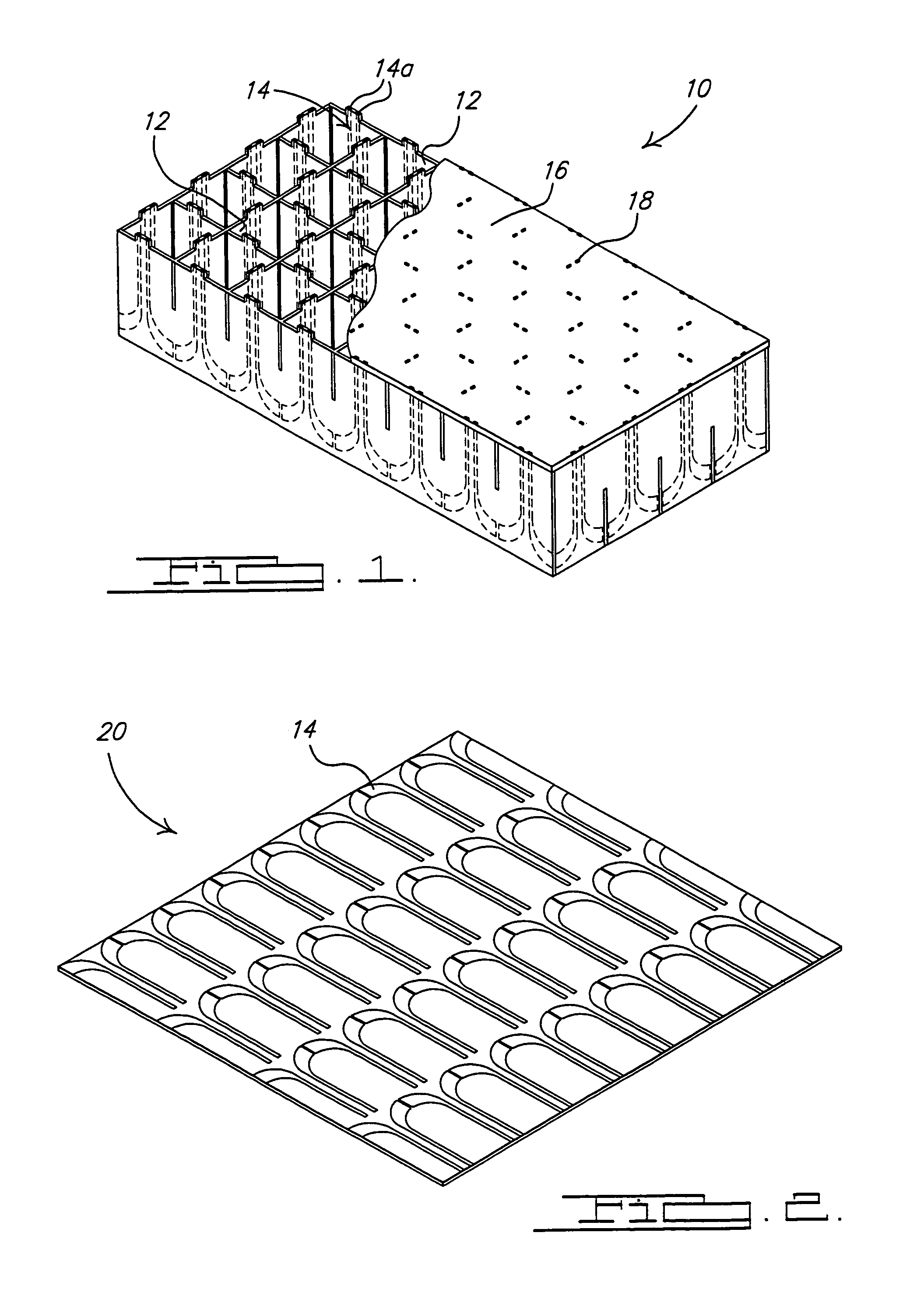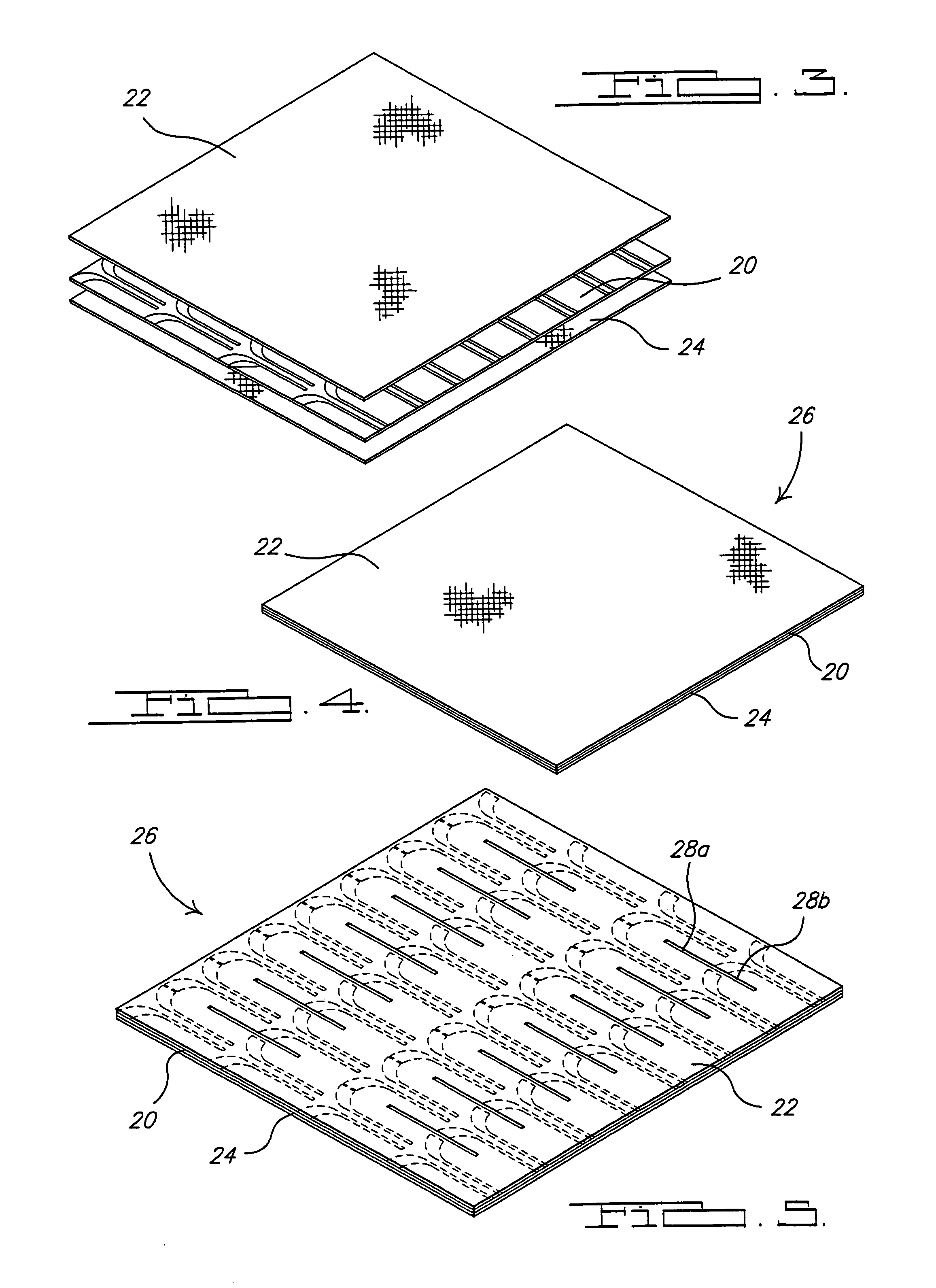Design and fabrication methodology for a phased array antenna with integrated feed structure-conformal load-bearing concept
a phased array antenna and feed structure technology, applied in the field of antenna systems, can solve the problems of no function and special requirements, and achieve the effects of avoiding parasitic weight, providing structural strength, and facilitating electrical connection of radiating elements
- Summary
- Abstract
- Description
- Claims
- Application Information
AI Technical Summary
Benefits of technology
Problems solved by technology
Method used
Image
Examples
Embodiment Construction
[0083]The following description of the preferred embodiment(s) is merely exemplary in nature and is in no way intended to limit the invention, its application, or uses.
[0084]Referring to FIG. 1, there is shown an antenna aperture 10 in accordance with a preferred embodiment of the present invention. The antenna aperture 10 essentially forms a load bearing honeycomb-like structure that can be readily integrated into composite structural portions of mobile platforms without affecting the overall strength of the structural portion, and without adding significant additional weight beyond what would be present with a conventional honeycomb core, sandwich-like construction technique that does not incorporate an antenna capability.
[0085]The aperture 10 includes a plurality of wall sections 12 interconnected to form a honeycomb or grid-like core section. Each wall section 12 includes a plurality of electromagnetic radiating elements 14 embedded therein. While FIG. 1 illustrates an X-Y grid-...
PUM
 Login to View More
Login to View More Abstract
Description
Claims
Application Information
 Login to View More
Login to View More - R&D
- Intellectual Property
- Life Sciences
- Materials
- Tech Scout
- Unparalleled Data Quality
- Higher Quality Content
- 60% Fewer Hallucinations
Browse by: Latest US Patents, China's latest patents, Technical Efficacy Thesaurus, Application Domain, Technology Topic, Popular Technical Reports.
© 2025 PatSnap. All rights reserved.Legal|Privacy policy|Modern Slavery Act Transparency Statement|Sitemap|About US| Contact US: help@patsnap.com



